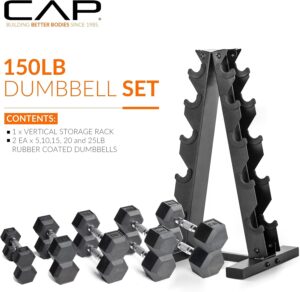In the world of bodybuilding, few names are as controversial or influential as Mike Mentzer. Known for his high-intensity training (HIT) philosophy, Mentzer challenged conventional wisdom about volume and frequency in weight training. Today, we’re exploring a 5-day split workout program that draws inspiration from Mentzer’s principles. Let’s break down the key aspects of this program and why they matter.

1. Low Volume, High Intensity
The most striking feature of this program is its low volume. Each exercise is performed for just one set, a stark contrast to traditional bodybuilding routines that often prescribe 3-5 sets per exercise. However, this single set is performed to muscular failure, meaning you continue until you physically cannot perform another rep with proper form.
Why it works: This approach is based on the idea that it’s not the volume of work, but the intensity that stimulates muscle growth. By pushing to failure, you’re recruiting the maximum number of muscle fibers and creating the necessary stimulus for growth.
2. Focus on Compound Movements
The program prioritizes compound exercises like bench presses, squats, deadlifts, and pull-ups. These movements engage multiple muscle groups simultaneously, allowing for heavier loads and greater overall muscular stress.
Why it works: Compound movements are efficient, allowing you to stimulate multiple muscle groups in a single exercise. They also tend to allow for heavier loads, which can lead to greater strength gains.
3. Controlled Tempo and Form
While not explicitly stated in the routine, Mentzer was a strong advocate for controlled repetitions. A typical tempo might be 2-3 seconds on the eccentric (lowering) phase, a brief pause, then an explosive concentric (lifting) phase.
Why it works: This controlled approach increases time under tension, a key factor in muscle growth. It also reduces the risk of injury and ensures that the target muscles, rather than momentum, are doing the work.
4. Extended Rest Periods
The program recommends 3-5 minutes of rest between exercises. This is longer than many traditional bodybuilding routines, which often prescribe 60-90 seconds between sets.
Why it works: Longer rest periods allow for more complete recovery between sets. This means you can put maximum effort into each set, maintaining the high intensity that’s crucial to this style of training.
5. Split Routine with Ample Recovery
The workout is split over 5 days, with each muscle group being trained once per week. This allows for significant recovery time between workouts for each body part.
Why it works: Mentzer believed that muscles need ample time to recover and grow after an intense workout. This split provides that time while still allowing for frequent training sessions.
6. Progressive Overload
While not explicitly mentioned in the routine, progressive overload is a key principle in any effective training program. In this context, it would mean increasing the weight or reps (within the prescribed range) whenever possible.
Why it works: Progressive overload ensures that your muscles are continually challenged, preventing plateaus and promoting ongoing growth and strength gains.
This Mentzer-inspired program challenges many conventional bodybuilding principles. It’s not about spending hours in the gym or demolishing your muscles with set after set. Instead, it’s about brief, focused, and incredibly intense training sessions.
Remember, this high-intensity approach isn’t for everyone. It requires mental fortitude to push to true muscular failure and the discipline to maintain proper form even as fatigue sets in. It’s also crucial to listen to your body and adjust as needed.
5-Day Split Workout Program (Inspired by Mike Mentzer's Philosophy)
This program is inspired by Mike Mentzer’s high-intensity training principles, emphasizing brief, intense workouts with extended rest periods. Remember to warm up properly before each session and adjust weights as needed.
Day 1: Chest and Triceps
- Incline Bench Press: 1 set, 6-8 reps to failure
- Flat Dumbbell Press: 1 set, 6-8 reps to failure
- Weighted Dips: 1 set, 6-8 reps to failure
- Close-Grip Bench Press: 1 set, 6-8 reps to failure
Day 2: Back and Biceps
- Weighted Pull-ups: 1 set, 6-8 reps to failure
- Bent-Over Rows: 1 set, 6-8 reps to failure
- Deadlifts: 1 set, 6-8 reps to failure
- Barbell Curls: 1 set, 6-8 reps to failure
Day 3: Rest
Day 4: Shoulders and Traps
- Military Press: 1 set, 6-8 reps to failure
- Lateral Raises: 1 set, 8-10 reps to failure
- Reverse Flyes: 1 set, 8-10 reps to failure
- Barbell Shrugs: 1 set, 6-8 reps to failure
Day 5: Legs
- Squats: 1 set, 6-8 reps to failure
- Leg Press: 1 set, 8-10 reps to failure
- Romanian Deadlifts: 1 set, 6-8 reps to failure
- Standing Calf Raises: 1 set, 10-12 reps to failure
Day 6 and 7: Rest
Notes:
- Perform each set to momentary muscular failure
- Use a controlled tempo: 2-3 seconds on the eccentric phase, 1-second pause, explosive concentric phase
- Rest 3-5 minutes between exercises
- Adjust weight to ensure failure within the given rep range
- Focus on progressive overload by increasing weight or reps when possible
- Consider incorporating advanced techniques like rest-pause or negative reps for further intensity
Hey there! We hope you love our fitness programs and the products we recommend. Just so you know, Symku Blog is reader-supported. When you buy through links on our site, we may earn an affiliate commission at no extra cost to you. It helps us keep the lights on. Thanks.
Disclaimer: The information provided in this discussion is for general informational and educational purposes only. It is not intended as medical or professional advice. Only a qualified health professional can determine what practices are suitable for your individual needs and abilities.




